Text
A completely locked-in patient is able to type out words and short sentences to his family, including what he would like to eat, after being implanted with a device that enables him to control a keyboard with his mind.
The findings, published in Nature Communications, overturn previous assumptions about the communicative abilities of people who have lost all voluntary muscle control, including movement of the eyes or mouth, as well as giving a unique insight into what it’s like to be in a “locked in” state.
Locked-in syndrome – also known as pseudocoma - is a rare condition, where people are conscious and can see, hear, and smell, but are unable to move or speak due to complete paralysis of their voluntary muscles, eg as a result of the progressive neurodegenerative disease amyotrophic lateral sclerosis (ALS).
#research#medical research#scientific research#sceience#biology#neurology#neuro#neuroscience#lockedin
67 notes
·
View notes
Link
Researchers at King’s College London found that the drug Tideglusib stimulates the stem cells contained in the pulp of teeth so that they generate new dentine – the mineralised material under the enamel.
Teeth already have the capability of regenerating dentine if the pulp inside the tooth becomes exposed through a trauma or infection, but can only naturally make a very thin layer, and not enough to fill the deep cavities caused by tooth decay.
But Tideglusib switches off an enzyme called GSK-3 which prevents dentine from carrying on forming.
Scientists showed it is possible to soak a small biodegradable sponge with the drug and insert it into a cavity, where it triggers the growth of dentine and repairs the damage within six weeks.
The tiny sponges are made out of collagen so they melt away over time, leaving only the repaired tooth.
143K notes
·
View notes
Text
Molar Pregnancy (Hydatidiform Mole)
Molar pregnancy is an abnormal form of pregnancy in which a non-viable fertilized egg implants in the uterus and will fail to come to term (will not develop into a child). Instead, the cells divide and replicate into a growing mass (mole) of non-foetal tissue.

Molar pregnancy is a gestational trophoblastic disease in which a non-viable egg grows into a mass (tumour) in the uterus that has swollen chorionic villi.
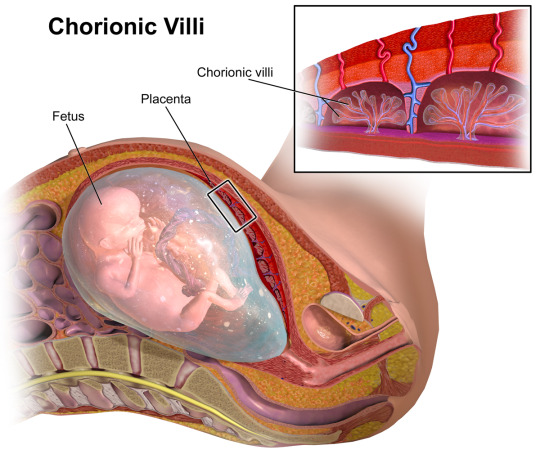
Can develop when a fertilized egg does not contain an original maternal nucleus.
Usually contains no foetal tissue.
Characterized by the presence of a hydatidiform mole (or hydatid mole).
Approximately 20% of women with a complete mole develop a trophoblastic malignancy (malignant disease // cancer)
Complete hydatidiform moles have a 2–4% risk of developing into choriocarcinoma in Western countries and 10–15% in Eastern countries, and have a 15% risk of becoming an invasive mole.
Molar pregnancies make up 1 in 1,000 pregnancies in the US and up to 1 in 100 pregnancies in parts of Asia.
Symptoms
Vaginal bleeding - molar tissue separates from the decidua, causing bleeding.
Uterus may become distended by large amounts of blood, and dark fluid may leak into the vagina.
Hyperemesis - severe nausea and vomiting due to very high levels of human chorionic gonadotropin (hCG).
Hyperthyroidism - thyroid gland is stimulated by the high levels of circulating hCG or by a thyroid stimulating substance (ie, thyrotropin) produced by the trophoblasts.
Partial mole
Partial moles do not generate the same clinical features as a complete mole. Patients instead present with signs and symptoms consistent with an incomplete or missed abortion, including vaginal bleeding and absence of foetal heartbeat.
#pregnancy#maternity#ob gyn#biomedical science#medical science#science#biology#human biology#medblr#nursing#premed#studyblr#midwifery#midwife#reproduction#development#pathology#obstetrics#biomed#notes#2#molar pregnancy#educational#gynae
179 notes
·
View notes
Note
hi, hope you’re safe and well. I’m currently in my second year of biomed and I have the option to extend my degree to 4 years by taking a placement year. The thing is, I have to independently find and secure the placement (uni is not involved at all). Since we’re in a cycle of lockdowns and restrictions I’ve found it really difficult to even begin looking at places that are willing to take me on for a few months let alone a whole year. I really want the experience but I honestly feel like I should just give up. The careers department direct me to their site that doesn’t really have much information. Do you have any advice on finding labs to approach and how to approach them? (I’m assuming I can’t just email them saying “can you take me on for a year please) Thank you, have a wonderful day!
If you want to be a biomedical scientist, i absolutely 100% recommend doing a placement year - it’s SO hard to get your portfolio done otherwise, you will spend years working as a lab assistant for very little pay even though you have the degree (from personal experience!). If you don’t want to be a BMS then don’t worry about a placement year, it’s a long time to be on little or no pay.
I’m afraid you will have to just write to every single lab you can find - email or call is all you can do at the moment. Look out for small private labs - you may have to do some investigation, so for example if you want to do haematology search on google as if you were trying to find a private blood test and find the lab they use.
You can also do a placement year after you’ve graduated! I fully understand how hard it is to find lab work at the moment, so if you don’t find one don’t give up!
18 notes
·
View notes
Text
Stem cells for therapy - types
Bone Marrow Cells (BMCs)
Whole bone marrow cells (BMCs) and bone marrow mononuclear cells (BMMCs) are the most accessible and studied source of stem cells.
BMMCs are isolated from whole bone marrow, and contain a diverse cell population, including mesenchymal stem cells and hematopoietic progenitor cells.
Mesenchymal Stem Cells (MSCs)
MSCs can be isolated from a variety of tissues such as bone marrow, adipose, and umbilical cord; although it is not clear whether their properties are uniform (Selem, Hatzistergos and Hare, 2011).
MSCs are of particular note due to their immunopriveleged nature – a reduced expression of MHC class-I molecule, and lack of MHC class-II and co-stimulatory molecules, means they could potentially be used for allogeneic grafts (Zimmet et al., 2005). This means that they don’t produce an immune response and could be used in transplants - the body won’t reject them.
MSCs inhibit the activity of various immune cells, including T cells, B cells, natural killer cells, and dendritic cells via cell to cell contacts and soluble factors (Laflamme and Murry, 2005).
Foetal and Umbilical Cord Cells
Embryonic stem cells (ESCs), the prototypical stem cell, can develop into all cell types in the body. However, the practical application of human ESCs remains limited due to ethical problems, teratoma formation (cancer), and immune rejection. With rapidly expanding knowledge of molecular and genetic pathways for ESC differentiation, it may become possible to avoid contamination with undifferentiated ESCs, thereby inhibiting teratogenesis when transplanted into the body (Kucia et al., 2006).
Foetal-derived stem cells can also be isolated from the amniotic fluid, which include both pluripotent and committed stem cells.
Umbilical cord cells can be gathered at birth and stored, eg if for treatment later on if a defect is detected in utero.
Induced pluripotent stem cells (iPSCs)
Induced pluripotent stem cells are a more attractive alternative to ESCs, as they are autologous. This means cells can be taken from an individual, ‘reset’ back to their stem cell stage, and then administered to that same individual to avoid rejection. Pluripotency transcription factors are introduced to adult terminally differentiated somatic cells, such as dermal fibroblasts, in a novel strategy which ‘reprograms’ the cells back to an embryonic stem cell-like stage (Yu et al., 2007).
Despite slight epigenetic differences associated with reprogramming, iPSCs fully resemble ESCs in terms of differentiation capacity, morphology and gene expression profile; and have the ability to differentiate into other cells. Ethical and immune response dilemmas are bypassed by the autologous nature of iPSCs, however clinical application is not yet on the horizon due to their teratogenic potential and the oncogenes and virus vectors required for the current method of pluripotent induction (Yamanaka and Takahashi, 2006).
Skeletal myoblasts (SM)
Skeletal myoblasts (satellite cells) are derived from skeletal muscle and have the capacity to differentiate into muscle fibre, which makes them obvious candidates for treating conditions such as heart damage following infarction. However, clinical trials have been halted as SM have been observed to couple with resident cardiomyocytes, resulting in dysfunctional electrocardiology and arrhythmias, and have struggled to transdifferentiate into cardiomyocytes in vivo (Reinecke, Poppa and Murry, 2002).
#stem#stem cells#regeneration#therapy#biomedical science#biomedicine#biology#medicine#medblr#studyblr#premed#science#human biology#notes#2#3#biomed#sciblr#nursing#med
223 notes
·
View notes
Text
Stem cells
Stem cells are cells in the body that don’t yet have any role (undifferentiated or partially differentiated), and can change to become almost any cell type.
Can proliferate (divide to make more cells) indefinitely to make more of the same stem cells.
They are the earliest type of cell in a cell lineage (if a cell was an adult human, stem cells would be the foetus)
found in both embryonic and adult organisms, but they have slightly different properties in each
Can also be made in a lab by reprogramming other cells - resetting them back to stem cell stage.

In embryonic development (a baby forming in the womb), pluripotent stem cells develop at the blastocyst stage (3-4 days) and differentiate into all the cells of the human body as the foetus develops.
Stem cells do exist in the adult body, however they are not pluripotent - they are unipotent or multipotent - this means they can only differentiate into one or a few cell types respectively.
Adult stem cells
Adult stem cells are found in a few select locations in the body, known as niches, such as:
the brain
bone marrow
blood and blood vessels
skeletal muscles
liver
gonads
They exist to replenish rapidly lost cell types and include hematopoietic stem cells, which replenish blood and immune cells, basal cells, which maintain the skin epithelium, and mesenchymal stem cells, which maintain bone, cartilage, muscle and fat cells. Adult stem cells are a small minority of cells.
#stem cell#stem cells#Regeneration#cells#notes#2#biomedicine#biomed#biomedical science#medblr#sciblr#biology#human biology#medicine#premed#nursing#physiology
156 notes
·
View notes
Text

#happy holidays!#life's been busy so i've had a hiatus but i'm still around#science#memes#stats#science memes#meme#santa#christmas
2K notes
·
View notes
Text
IBS - Irritable Bowel Syndrome
Symptoms of irritable bowel syndrome include stomach cramps, bloating, diarrhoea and constipation. These may come and go over time.
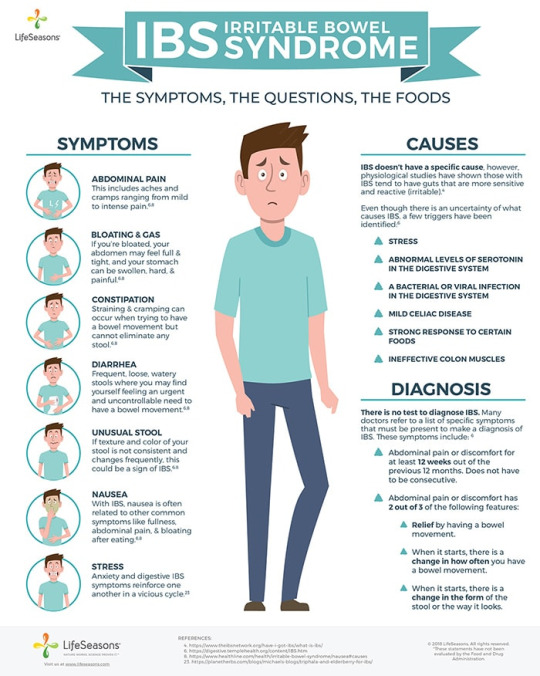
IBS is characterized by abdominal pain and altered bowel habit in the absence of a specific and unique organic pathology. This means that there are symptoms of colon irritation/damage, but no specific disease can be identified and there is vast variation between patients.
Pathology
Causes for IBS have not yet been identified, but current research suggests:
Altered GI motility
The myoelectric activity (electric potential of muscles - how muscles contract and relax, in this case to push food along) of the colon is composed of background slow waves with spike potentials.
Colonic dysmotility in irritable bowel syndrome manifests as variations in slow-wave frequency and a blunted, late-peaking, postprandial response of spike potentials.
This causes delayed meal transit (slow digestion) in patients prone to constipation, and in accelerated transit in patients prone to diarrhoea.
Current theories suggest generalized smooth muscle hyperresponsiveness - the muscle cells overreact to the electric currents.
Visceral hyperalgesia
IBS symptoms may be a result of an increased pain response to colon activity
Rectosigmoid and small bowel balloon inflation produces pain at lower volumes in patients than in controls.
Notably, hypersensitivity appears with rapid but not with gradual distention.
Patients who are affected describe widened dermatomal distributions of referred pain. Sensitization of the intestinal afferent nociceptive pathways that synapse in the dorsal horn of the spinal cord provides a unifying mechanism.
Psychopathology
IBS is both more common and more debilitating in patients with panic disorder, major depression, anxiety disorder, and hypochondriasis.
The psychopathology and stress caused by these disorders may contribute to IBS.
This is particularly concerning as IBS symptoms will worsen these conditions, which may in turn worsen the IBS.
Microscopic inflammation
Both colonic inflammation and small bowel inflammation have been discovered in a subset of patients. These studies are still in early stages.
Alterations in the intestinal biome
Small bowel bacterial overgrowth has been heralded as a unifying mechanism for the symptoms of bloating and distention.
The faecal microflora (bacteria in poo) also differs among patients with irritable bowel syndrome compared to those without.
#ibs#medicine#medblr#studyblr#biomedicine#Biomedical Science#biomed#premed#nursing#science#biology#colon#pathology#gi#colonoscopy
110 notes
·
View notes
Text
Ovarian Cancer
Malignant lesions of the ovaries include primary lesions arising from normal structures within the ovary and secondary lesions from cancers arising elsewhere in the body.
Signs and symptoms
Bloating; abdominal distention or mass
Pressure effects on the bladder and rectum
Constipation, indigestion, reflux
Vaginal bleeding
Shortness of breath, tiredness, weight loss
Diagnosis
Physical findings are uncommon in early stages. Advanced disease may present with ovarian or pelvic mass, ascites, pleural effusion, or abdominal mass or bowel obstruction.
Pathophysiology
Typically spreads to the peritoneal surfaces and omentum.
Occurs via local extension, lymphatic invasion, intraperitoneal implantation, hematogenous dissemination, or transdiaphragmatic passage.
Malignant cells can implant anywhere in the peritoneal cavity but are more likely to implant in sites of stasis along the peritoneal fluid circulation.
Epithelial tumours make up 90% of ovarian tumours. Other histologies include:
Sex-cord stromal tumors
Germ cell tumors
Primary peritoneal carcinoma
Metastatic tumors of the ovary
Epithelial ovarian cancer
Arises from epithelium covering the fimbria of the fallopian tubes, or the ovaries, both of which are derived from the coelomic epithelium.
Found primarily as cystic lesions with solid components.
Surface may be smooth or covered in papillary projections.
Cysts contain fluid from yellow to brown and haemorrhagic.
Four main histologic subtypes:
Serous (from fallopian tube)
Endometrioid (endometrium)
Mucinous (cervix)
Clear cell (mesonephros)
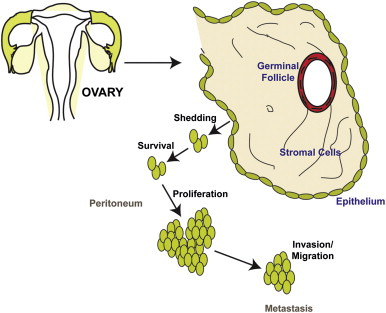
Tumours of low malignant potential
Tumours of low malignant potential (LMP) are a variety of much less aggressive epithelial ovarian cancer, with good prognosis.
LMP tumors can cause a range of symptoms similar to epithelial ovarian cancer, including increasing abdominal girth, an abdominal mass, abdominal pain, abnormal uterine bleeding, urinary symptoms, and gastrointestinal symptoms. They may be asymptomatic and found on routine physical examination or ultrasound scan.
#cancer#oncology#gynecology#ovarian cancer#ovaries#pathology#science#medblr#studyblr#sciblr#medschool#premed#nursing#medicine#biology#human biology#notes#2
156 notes
·
View notes
Link
A widely available and low-cost drug may save the lives of some patients hospitalized with COVID-19. The finding comes from preliminary data collected as part of a large clinical trial. The drug helped seriously ill patients who were on ventilators or getting extra oxygen.
Explainer: What is a clinical trial?
The drug is dexamethasone (Dex-uh-METH-ah-sown). It’s a type of synthetic steroid hormone. Doctors have prescribed it for decades to fight inflammation. Here, it was tested on COVID-19 patients at more than 175 hospitals in the United Kingdom.
Compared to standard care, use of this drug cut the death rate by about one-third in people on ventilators. (Those machines effectively breathe for the patients.) It cut death rates by one-fifth in patients who could breathe on their own but needed some supplemental oxygen. There appeared to be no benefit for coronavirus patients who didn’t need extra oxygen.
Explainer: What is a coronavirus?
Last month, scientists reported promising data on a different drug, which appears to shorten recovery time for seriously ill patients.
The findings for dexamethasone have not yet appeared in a scientific journal. They were instead issued in a June 16 news release. This means outside scientists have not yet had a chance to review all the data.
Once they do and the results still are able to hold up to scrutiny, this drug would be the first shown to cut the risk of death from COVID-19. When it comes to the coronavirus, says Martin Landray, “This is the first drug that says, yes, we can increase your chances of survival.” Landray is a heart specialist in England at the University of Oxford.
70 notes
·
View notes
Note
hi! i just check out your etsy shop and was wondering if there's a reason why it says the items won't ship to the United States? thank you in advance!
Hi - I’ve not looked into how much it would cost but I will do that now and put some prices on!
10 notes
·
View notes
Text
Something a bit different! I’ve just taken up embroidery as a lockdown hobby and also because I haven’t had any income in three months and am getting desperate (ha ha) and this is one of the first things I made. I’m a complete beginner but I’d love to do more scientific things so if anyone has any ideas or wants to commission something than please do hit me up! I have an instagram and an etsy where i’ve also started making masks.
much love and appreciation <3

#thank you so much even if you just check out my stuff it helps me out#i will have work as soon as cancer surgeries start up again but i need to move house in the next month so i'm trying everything#embroidery#embroideryart#art
159 notes
·
View notes
Text
Taste
The tongue is covered with many little bumps called papillae. Taste buds are found in the walls of papillae and the grooves surrounding them. Each taste bud contains anywhere from 50 to 150 taste receptor cells.
Microvilli extend from taste receptor cells
and protrude through an opening (taste pore) into the mouth.
These microvilli come in contact with substances in the mouth that can be tasted, also known as tastants.
Tastants interact with taste receptor cells through a number of different mechanisms to depolarize the cells.
When taste cells are depolarized, they release neurotransmitters that stimulate sensory neurons that travel in cranial nerves VII, IX, and X.
These neurons terminate on neurons in the nucleus of the solitary tract in the medulla then continue on to the thalamus.
Taste information is sent to the gustatory cortex, ( ocated on the border between the anterior insula and the frontal operculum).
This information encodes for basic tastes, such as sweet, salty, sour, bitter, and savory or umami.
However, the actual flavour of a food---which is what we typically define as taste---is created by a combination of taste and olfactory (smell) information.
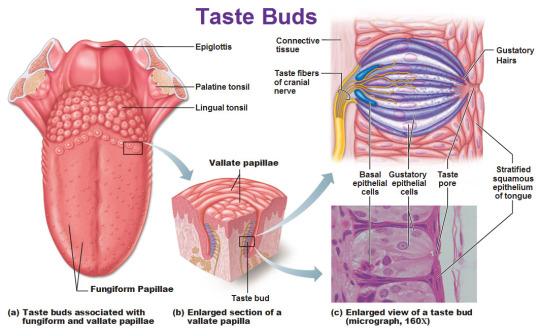
Sweetness
Produced by the presence of sugars, some proteins, and other substances.
Detected by G protein-coupled receptors T1R2+3 (heterodimer) and T1R3 (homodimer).
Saltiness
Saltiness is a taste produced best by the presence of cations (such as Na+, K+or Li+)
Directly detected by cation influx into glial like cells via leak channels causing depolarisation of the cell.
Sourness
Sourness is acidity and is also sensed using ion channels.
Undissociated acid diffuses across the plasma membrane of a presynaptic cell, where it dissociates in accordance with Le Chatelier's principle.
The protons that are released then block potassium channels, which depolarise the cell and cause calcium influx.
Bitterness
Current research suggests TAS2Rs (taste receptors, type 2, also known as T2Rs) such as TAS2R38 are responsible tasting bitter substances.
Savouriness
The amino acid glutamic acid is responsible for savouriness, but some nucleotides (inosinic acid and guanylic acid) can act as complements.
Glutamic acid binds to a variant of the G protein-coupled receptor, producing a savoury taste
#medicine#biomed#biomedicine#notes#medblr#studyblr#sciblr#premed#nursing#biology#human biology#med#biomedical science#science#taste#physiology#anatomgy#gustatory#gustatory system#gustatory cortex#mouth
265 notes
·
View notes
Link
New research published in the New England Journal of Medicine shows that the respiratory virus SARS-CoV-2, which causes COVID-19, causes severe damage to blood vessels, leading to widespread thrombosis, a press release by the Angiogenesis Foundation reports.
The study was conducted by an international team of medical scientists who compared the lungs of patients who died from COVID-19 with lungs of patients who died from influenza as well as with healthy lungs donated for transplantation.
The researchers discovered an unexpected disease pattern in COVID-19 lungs: the virus invaded the endothelial cells, and this was accompanied by blood clots. Compared to the flu, COVID-19 lungs had 9-fold more blood clots and the blood vessels were injured by the virus causing an unusual reaction of blood vessel growth.
Separately, a 6 May report published in the Journal of the American College of Cardiology described how using blood thinners in patients hospitalised with COVID-19 appeared to be protective and associated with better outcomes.
#Corona#COVID19#covid-19#Coronavirus outbreak#coronavirus#rona#research#medical research#medblr#sciblr#medicine
149 notes
·
View notes
Photo
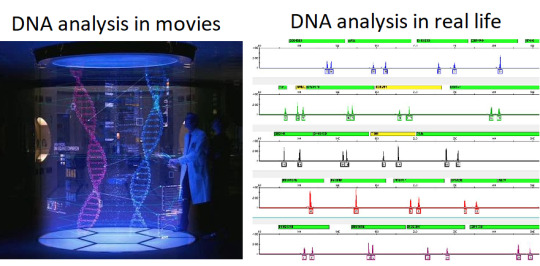
7K notes
·
View notes
Video
youtube
Obsessed with this youtube channel rn!
82 notes
·
View notes
Link
As key players in the body’s immune defense, T cells have the ability to track down and attack cancer cells, but can have trouble seeking out those that are not already inflamed. A new immunotherapy deliver system could make these natural killer cells far more effective by strategically inflaming so-called cold tumors so T cells can detect and destroy them with much greater efficiency.
The new technique was developed by scientists at the University of Chicago and falls under an arm of cancer treatment known as immunotherapy. This involves supercharging the body’s immune system in different ways so that it can better fight off cancer, and one of the ways it can do this is through what are known as checkpoint inhibitors.
#new atlas audio#cancer#oncology#researc#research#medical research#cancer research#medblr#medicine#med#medschool#science#biology
59 notes
·
View notes